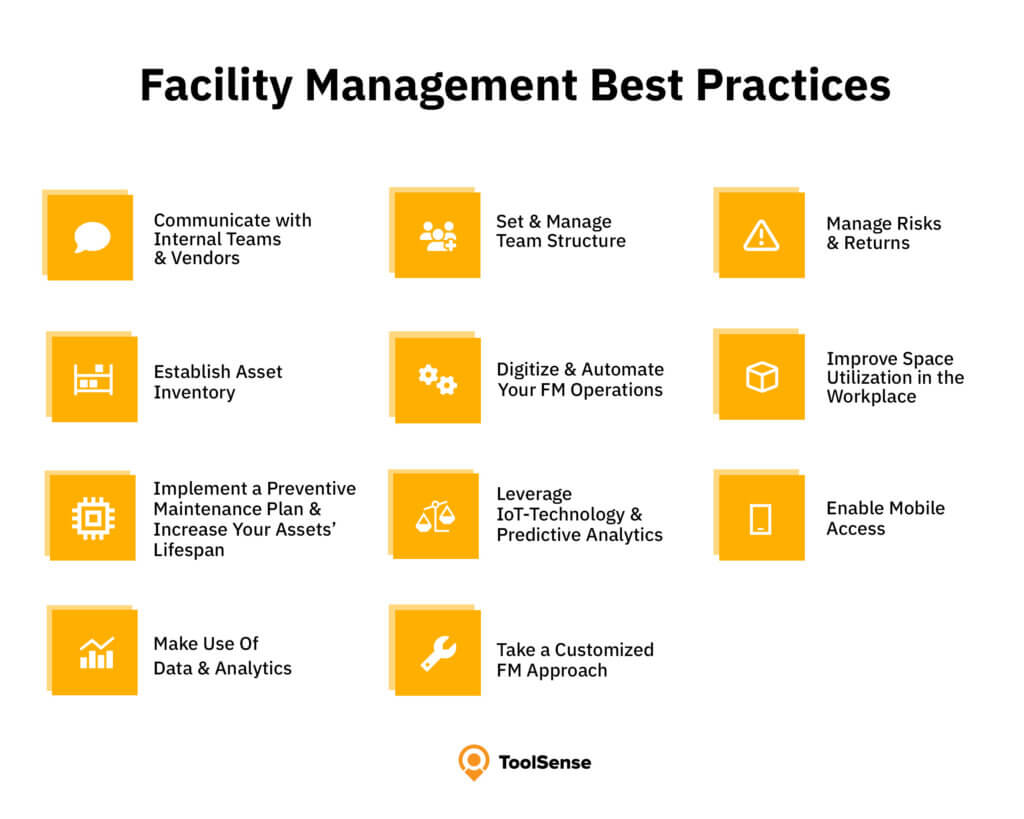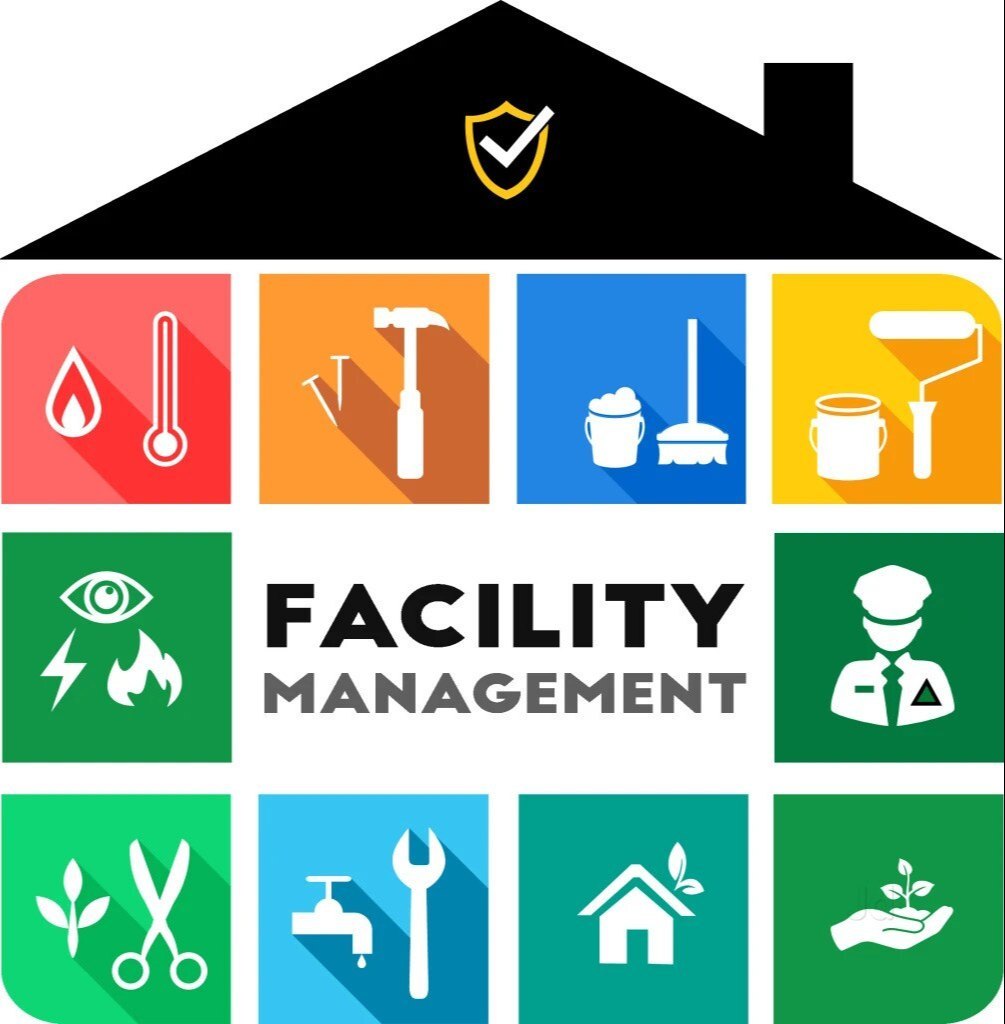Facility Management-- Streamlined Procedures and Expense Savings
Facility Management-- Streamlined Procedures and Expense Savings
Blog Article
The Necessary Guide to Facility Management: Approaches for Success
Facility monitoring plays a vital function in the total success of a company, serving as the backbone that sustains efficiency, security, and efficiency. The subtleties of reliable facility administration prolong past plain logistics and call for a comprehensive understanding of both qualitative and quantitative metrics.
Recognizing Facility Management
What comprises effective center monitoring? Reliable center monitoring incorporates the control of different organizational features to make certain that built atmospheres are secure, effective, and helpful to efficiency. It integrates the principles of design, service, and architecture administration to create a seamless functional circulation within an organization.
Trick elements of facility management include area planning, maintenance management, and compliance with wellness and safety policies. Area preparation concentrates on enhancing making use of physical sources to sustain organizational goals, while maintenance monitoring ensures that centers are kept in optimal problem, maximizing life-span and minimizing functional prices. Compliance with lawful and governing requirements is vital, as it safeguards the company against prospective liabilities and enhances its reputation.
Additionally, efficient facility management counts on the strategic use modern technology, such as Structure Administration Systems (BMS) and Computer-Aided Center Administration (CAFM) tools. These modern technologies facilitate real-time surveillance of structure systems and improve maintenance procedures (Facility Management). Eventually, an extensive approach to center monitoring not only advertises functional efficiency yet likewise fosters a favorable atmosphere for employees and site visitors alike, driving total organizational success

Key Methods for Optimization
Maximizing facility administration calls for a tactical technique that straightens functional experiment organizational goals. To attain this, the first key technique is the application of integrated technological options. Making use of innovative software systems permits real-time tracking of facility procedures, assisting in data-driven decision-making and boosting total performance.
Secondly, routine evaluations of facility performance are necessary. Performing regular assessments and audits makes it possible for center supervisors to determine areas that require improvement, ensuring that resources are allocated efficiently. This proactive approach helps in minimizing downtime and boosting solution distribution.
Another vital technique is promoting collaboration across divisions. By motivating open communication between groups, center managers can better straighten their methods with organization goals, leading to boosted functional synergy. Additionally, involving personnel in training programs promotes a culture of responsibility and enhances their capacity to add to optimization initiatives.
Enhancing Safety Methods
Enhancing safety and security procedures is vital for producing a safe environment within centers. A detailed safety method not only protects staff members and visitors yet additionally enhances functional efficiency. Facility Management. To attain this, facility supervisors should perform routine threat evaluations to determine potential hazards and make certain that suitable actions are in place

Furthermore, clear communication channels should be established to report safety concerns promptly. This consists of developing an obtainable platform for workers to voice potential risks or events without worry of reprisal. Leveraging technology can boost security measures; for instance, carrying out surveillance systems and accessibility controls assists monitor facility tasks and restrict unauthorized access.
Finally, conformity with regional regulations and sector requirements is non-negotiable. Normal audits and evaluations of safety protocols ensure placement with present regulations and finest techniques. By prioritizing these strategies, facility supervisors can cultivate a society of safety that secures all stakeholders and ultimately adds to the organization's success.
Improving Office Atmosphere
A favorable workplace setting considerably boosts employee morale and performance, making it an essential focus for center administration. To create such an atmosphere, center managers ought to focus on several crucial elements, including functional designs, visual appeals, and staff member involvement.
Ergonomic factors to consider are vital to lessen physical pressure and discomfort. This includes supplying flexible furnishings, proper lighting, and appropriate room for activity. These adjustments can bring about reduced absenteeism and enhanced task contentment.
Visual appeals play a crucial duty fit the workplace atmosphere. Utilizing color psychology, all-natural lighting, and greenery can cultivate a promoting and welcoming atmosphere. Thoughtfully developed areas can improve creative thinking and boost overall well-being.
Furthermore, encouraging employee engagement through comprehensive decision-making procedures can boost the feeling of ownership and belonging. Gathering feedback on workplace improvements and entailing staff members in the style procedure can bring about a more tailored setting that meets their demands.
Last but not least, advertising health efforts, such as wellness programs and leisure rooms, can additionally add to a supportive office society. By concentrating on these methods, facility managers can properly enhance the workplace setting, driving both worker fulfillment and organizational success.
Measuring Success in Facilities
Determining success in facility administration requires a comprehensive strategy that assesses both qualitative and measurable metrics. look what i found Quantitative metrics commonly include key efficiency indicators (KPIs) such as room usage prices, power consumption, upkeep costs, and tenancy levels. These metrics give a clear photo of functional efficiency and economic performance, enabling facility managers to recognize areas for renovation and benchmark versus sector requirements.
Qualitative metrics, on the various other hand, focus on individual satisfaction and worker involvement. Surveys and comments devices can evaluate how well the facilities fulfill the needs of passengers, aiding to evaluate the general office environment. This element is critical, as a satisfied labor force is often linked to boosted efficiency and retention prices.
To efficiently gauge success, center managers must additionally take into consideration incorporating technology, such as developing administration systems and information analytics devices, to accumulate and analyze appropriate data. Regularly evaluating both sets of metrics enables for an extra well balanced sight of efficiency and educates strategic decisions. Ultimately, a successful facility management technique hinges on a commitment to continuous improvement, making sure that both functional effectiveness and individual fulfillment are prioritized.

Conclusion
In final thought, reliable center management is important for improving business efficiency. Focusing on security procedures and boosting workplace environments further contribute to boosted worker contentment.
Center monitoring plays a crucial duty in the total success of an organization, serving as the foundation that supports productivity, efficiency, and safety and security.Trick aspects of facility management consist of room preparation, maintenance administration, and compliance with health and safety and security laws.In addition, efficient facility monitoring counts on the calculated use of technology, such as Structure Administration Systems (BMS) and Computer-Aided Center Administration (CAFM) tools. Ultimately, a comprehensive strategy to facility management not just promotes functional effectiveness but additionally promotes a positive atmosphere for visitors and employees alike, driving total organizational success.
Ultimately, an effective facility monitoring technique pivots on a commitment to continual improvement, ensuring that both functional efficiencies and customer fulfillment are focused on.
Report this page